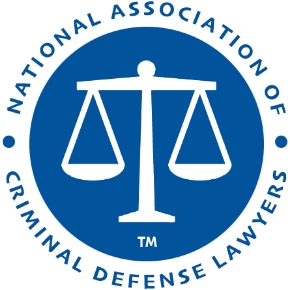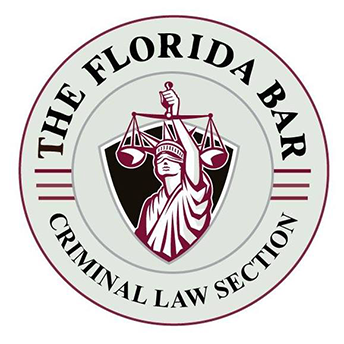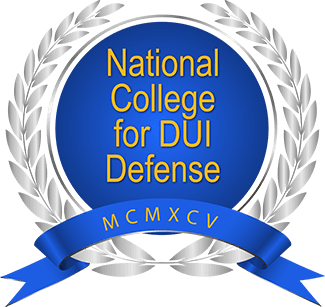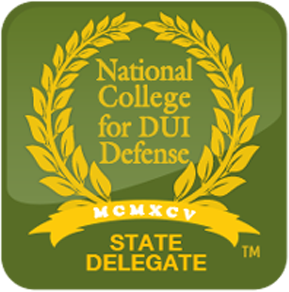“Hit and Run” Accidents
After a traffic crash, it is ALWAYS best to remain at the scene until you have complied with all of your obligations under Florida law. Leaving the scene of a crash might lead to serious criminal charges. If you broke the law by leaving the scene of a traffic accident, then a criminal investigation has already begun.
Don’t compound your first mistake with a second mistake. Instead, immediately seek out the services of an experienced criminal defense attorney who can help you at every stage of the case.
First, your attorney can contact the investigating officer. That way, the investigating officer will not come looking for you at your home or work for the purpose of asking you questions.
Second, your attorney can show the investigating officer all of the reasons an arrest should not be made, especially if insufficient evidence exists to identify you as the driver.
Third, your attorney can help you deal with questions from your insurance company as they prepare to settle any civil lawsuit involving the victim of a hit and run crash. Avoiding an arrest is especially likely if you take the steps necessary to resolve any civil lawsuit for damages.
Keep in mind that if you make any false statement to an insurance company about how the accident occurred, you might face additional charges including insurance fraud. Your criminal defense attorney can help you decide on the best course of action to protect yourself and meet the legal requirements.
An attorney can also make sure that your rights are protected at every stage of the case. We can help you fight for the absolute best result possible in the case.
Attorney for “Hit and Run” Crashes in Tampa, FL
If you were involved in a hit-and-run accident in Tampa, Hillsborough County, or any of the surrounding Tampa Bay areas, then it is important to contact an experienced criminal defense attorney BEFORE making any statements to law enforcement or an insurance company.
Whether your case involves crashing into attended or unattended property, we can help. We also represent clients in extremely serious felony cases for hit and run when they are accused of injuring a pedestrian, passenger, or another driver during a traffic crash.
Our attorneys are familiar with the procedures used in the “Hit-and-Run Units” of the Tampa Police Department, Hillsborough County Sheriff’s Office, the Florida Highway Patrol, and other local law enforcement agencies throughout the greater Tampa Bay area. From our office in New Port Richey, we represent clients accused of hit and run in Pasco County, FL.
Contact us to find out more about the criteria used for charging the crime as a felony or misdemeanor, the definition of leaving the scene, and whether the statute of limitations might prohibit a criminal prosecution or civil liability.
After you retain us to represent you, we can send a letter of representation to the investigating officer, your insurance company, and any other insurance company involved in the crash. We can begin your defense immediately.
Call us to discuss your case at (813) 250-0500.
Remain Silent after the Criminal Investigation Begins
Never discuss the crash or the facts surrounding your decision to leave the scene once a criminal investigation for “hit and run” has begun. To invoke your Fifth Amendment right to remain silent and your Sixth Amendment right to counsel, simply tell the officer that “I will remain silent until my attorney is present.”
Your attorney can help you assert your rights. After we are retained, we notify the investigating officer that we represent you and that you are invoking your right to remain silent. This notification is the best way to make sure that the officer doesn’t come to your home or office to interrogate you about the accusation.
The accident report privilege provides that a “crash report made by a person involved in a crash and any statement made by such person to a law enforcement officer for the purpose of completing a crash report… shall be without prejudice to the person so reporting.” However, if the defendant has left the scene of an accident and failed to report the accident, then the accident report privilege would not necessarily apply to a subsequent non-custodial interview. See Cummings v. States, 398 So. 2d 983 (Fla. 2d DCA (2001); State v. Hepburn, 460So.2d 422, 425 (Fla. 5th DCA 1984).
The penalties for “hit-and-run” in Florida are harsh, and the law is often unforgiving in these cases, particularly when another person is injured in the crash. Anything you say to law enforcement can and will be used against you to prosecute the case. Your side of the story can best be told by your criminal defense attorney. Your attorney can also help you preserve favorable evidence that might be lost with the passage of time.
The attorneys at Sammis Law Firm work in Tampa, Florida, and represent clients throughout Hillsborough County, at the courthouse in Tampa and Plant City. We also represent clients in the surrounding areas including the courthouses in St. Petersburg and Clearwater in Pinellas County, Bartow in Polk County, New Port Richey and Dade City in Pasco County, and Brooksville in Hernando County, FL.
Types of Hit and Run Charges in Florida
Hit and Run crimes in Florida are often charged as:
- leaving the scene of a crash of unattended property without any injury (F.S. §316.063), a second-degree misdemeanor;
- leaving the scene of a crash of attended property or another occupied vehicle (F.S. §316.061), a second-degree misdemeanor; or
- felony hit and run for leaving the scene of a crash with injury (F.S. §316.027), a third-degree felony.
In many of these cases, it is alleged that the person left the scene of the crash in order to avoid an arrest for another criminal traffic offense such as DUI, reckless driving, racing, driving with a suspended or revoked license, no valid driver’s license, or fleeing to elude.
Points for a Leaving the Scene Conviction
You should also keep in mind that points will be assessed on your driving record if you are convicted of any of the following offenses:
- 6 points – 316.061(1) CRASH – Leaving scene without giving information more than $50 damage (specify amount); and
- 6 points – 316.063(1) CRASH – Fail to leave information UNATTENDED vehicle – property damage.
Restitution in “Hit and Run” Cases
Restitution can only be ordered for damages that are directly or indirectly caused by the criminal offense. There must be a significant relationship between the offense and the damages.
For cases involving leaving the scene of an accident, the courts in Florida have consistently held that damages resulting from the accident itself do not provide a basis for restitution, as those damages precede the crime. State v. Williams, 520 So. 2d 276 (Fla. 1988); Salvador v. State, 601 So. 2d 227 (Fla. 2d DCA 1992); Stover v. State, 612 So. 2d 661 (Fla. 4th DCA 1993); Triplett v. State, 709 So. 2d 107 (Fla. 5th DCA 1998).
Phantom or Non-Contact “Hit and Run” in Florida
What happens if your car did not actually come into contact with any other car involved in the crash? Can you be charged with “hit and run” if your vehicle never “hit” anything?
In Florida, the answer is theoretically “yes.” In fact, the Tampa Police Department has standard operating procedures specifically dealing with the criteria for a phantom vehicle “hit and run” investigation (sometimes called the no contact “hit and run” or the non-contact “hit and run”).
Before a non-contact (phantom) vehicle can be considered a hit and run vehicle, the following criteria must be established:
- the driver must have had some reasonable knowledge of its involvement;
- the vehicle must have been a direct cause of the crash; and
- the vehicle did leave the scene to avoid its responsibility under Florida law.
The non-contact vehicle should only be listed if all of those facts are established by evidence or witness(es). If the no contact vehicle (phantom vehicle) is not at the scene, then the law enforcement officers treat the investigation as a hit and run. The non-contact hit and run can be charged as either a misdemeanor or felony. The non-contact vehicle is listed last in the crash report.
In most cases, the information about a no-contact “hit and run” vehicle is not entered into the statistical blocks of the crash report on the driver, vehicle or codes on phantom / non-contact or hit and run vehicles until this information can be verified.
SOP for Hit and Run Investigation by TPD
The standard operating procedures (SOP) for the Tampa Police Department (TPD) for hit and run accidents can be found in Section 404.7.
The new standard operating procedures for hit and run cases supersede SOP 404.7, dated June 2006. The new SOP in effect as of December 31, 2014, includes:
404.7. HIT & RUN
I. Hit and run felony (F.S. §316.027) and misdemeanors (F.S. §316.061 and F.S.§316.063) will be documented on HSMV 90010. Refer to guidelines in SOP 401.4 (B) in cases involving unattended property.
All Hit and Runs involving attended or unattended property damage, regardless of whether the crash occurred on the roadway or private property, are misdemeanors.
Hit and Runs involving injuries are felonies. [Tampa Police Department] Officers charging a suspect with “Leaving the Scene of a Traffic Crash with Injuries”, F.S.§316.027 must complete a citation and a Criminal Report Affidavit.
A. The criminal investigation will be documented by writing a supplement or general offense report using the electronic MRE/Versadex report writing system.
All officers at the scene of a serious injury and/or a traffic crash fatality will supplement their response and involvement. Any action taken by investigating officers must be documented in the original report or a supplement.
B. In felony hit and run cases only, a 72-hour bolo will be called into the pick-up desk and documented in the report. Sufficient data for identification of the suspect vehicle is necessary for probable cause for placing the bolo.
C. When documenting the details of a hit and run investigation, certain information is necessary to assist the latent investigators in their tasks. Information of the types listed must be accurately documented on HSMV 90010, and in the electronic MRE/Versadex reporting system:
1. Vehicle color, description, and location of damage; any information that further describes the suspect vehicle such as antennas, wheel covers, dents, mirrors, etc. and; a description of the suspect driver, and whether or not the victim/witnesses can identify the suspect via photopak, should be documented.
These items should be listed exactly as the complainant and any witnesses describe them;
2. The color of the complainant’s vehicle must be included, along with the complainant’s business address and business telephone number;
3. Identifying data for witnesses, including home and business address and telephone number, and whether or not the witness can identify the suspect via photopak;
4. Any evidence and where it was obtained;
5. Any other helpful information to assist in the investigation, such as the registration of the suspect vehicle, and whether or not the registered owner was contacted, etc; any action taken by the investigating officers in furtherance of the investigation must be documented; and
6. Give a description of the seriousness of the injuries to assist the latent investigators in their investigation.
D. Officers impounding vehicles with blood splatter and/or exposed human tissue from crash injuries must mark the vehicles as “Biohazard.”
Write “Biohazard” in large print across the top of the impound report and mark the vehicle with the “Biohazard” tape provided by the department through the Evidence Control Section (see SOP 665).
E. If the suspect vehicle is found and impounded with a police hold, and the suspect is then located and charged on the date of occurrence, the investigating officer shall notify the impound lot using the MRE/Versadex system and release the hold on the suspect vehicle unless it is a:
-
- traffic fatality;
- a serious injury crash where the victim is not expected to live; or
- there is evidence in the vehicle or evidence of the vehicle being used in other crimes.
If the owner of a vehicle arrives and claims to have loaned the vehicle to a person, but cannot produce the person, the vehicle will be impounded and held as evidence in a Hit and Run.
F. When the suspect is encountered, if you are unable to bring charges at that time, make sure the suspect is fully identified (photo identification) or have photos taken of the suspect (upper portion facing camera) and fully body length (front, both sides, and back) and describe the suspect’s physical characteristics (including any injuries) and clothing.
G. If the originating officers arrest the hit and run driver, complete the crash report in its entirety. If the hit and run driver is arrested by officers other than the originating officers, the arresting officer must obtain all the information necessary for completion of the crash report; e.g., driver’s license number, insurance company name and policy number, VIN number, vehicle owner, driver’s occupation, all occupants of the vehicle, etc.
II. PHANTOM / NON-CONTACT VEHICLES:
A. A non-contact unit will always be listed last in the crash report if the non-contact vehicle has been established by evidence or witnesses .
B. Before a phantom/non-contact vehicle can be considered a hit and run vehicle, the vehicle must have been a direct cause of the crash, there was some reasonable knowledge of its involvement, and the vehicle did leave the scene to avoid its responsibility under Florida law.
C. If the phantom / non-contact vehicle is not at the scene, treat the investigation as a hit and run (misdemeanor or felony).
D. Do not enter information in statistical blocks of the crash report on the driver, vehicle, or codes on phantom / non-contact or hit and run vehicles until this information can be verified.
III. INVESTIGATION OF HIT AND RUN CASES:
The Hit and Run Victim Form (TPD 594) is provided to the victim of certain Hit and Run crashes by the investigating officer. The form contains instructions for a victim who is interested in prosecuting the suspect in Hit and Run cases. TPD form 594 is not issued in Hit and Run cases involving serious, life-threatening, or fatal injuries. These cases are referred to the Hit and Run Handle for latent investigation.
A. Officers [with the Tampa Police Department] will continue to respond to reports of Hit and Run traffic crashes and conduct the appropriate investigation, to include following up on any investigative leads that they uncover during their investigation. This information will be documented in the supplemental or general offense report.
B. When circumstances indicate an offense has occurred, the appropriate report will be initiated. If the victim sustained property damage and/or minor injury and there are no investigative leads, no TPD form 594 will be issued and the report will be inactivated.
C. When circumstances indicate an offense has occurred, the victim sustained property damage and/or minor injury, and there are investigative leads that may lead to the identification of a suspect, the investigating officer shall issue TPD form 594 and document the issuance of the form in the supplemental or general offense report. These cases will be routed to the Hit and Run Handle.
D. The investigating officer will fill in the required information on the Hit and Run Victim Form (TPD 594). This includes the offense number and date, as well as the investigating officer’s name, badge number, and district.
E. Officers are not to advise the victim that a Hit and Run Investigator will contact them. Officers are to instruct the victim to comply with the instructions on the form and contact the Hit and Run Victim’s Call-In Line by telephone after seven (7) days but within thirty (30) days from the day of the crash.
F. The Supervisor of the Traffic Squad [for the Tampa Police Department] will ensure the following:
1. Each working day during normal business hours (8:00 a.m. to 5:00 p.m.), a Community Service Officer will be assigned to monitor the voicemail system set up for the Hit and Run Victim’s Call-In Line.
2. The Community Service Officer will be assigned the responsibility of checking the voicemail messages left on the Hit and Run Victim’s Call-In Line no less than once each business day.
3. The Community Service Officer will notify the Supervisor of the Traffic Squad and provide the necessary contact information when victims contact the department and wish that their case be investigated further.
4. The Supervisor of the Traffic Squad shall review the victim’s case and make a determination of whether or not sufficient leads exist for additional latent investigation.
a. If the Supervisor of the Traffic Squad does not feel that there are sufficient leads to warrant latent investigation, the victim will be contacted and informed. The case will be inactivated.
b. If the Supervisor of the Traffic Squad feels that there are sufficient leads to warrant latent investigation, the case will be assigned for latent investigation.
5. The Community Service Officer will purge the Hit and Run Queue of those cases in which victims did not contact the Hit and Run Victim’s Call-In Line within 30 days.
a. Those cases will be closed per the Crime Information System guidelines.
b. The cases will also be updated in the Versadex system and changed to “Inactive.”
Read more about how investigators conduct hit and run crash investigations in Orlando, Orange County, FL, which has similar policies and procedures.
Finding a Lawyer in Tampa for Leaving the Scene of a Crash
If you believe that you are under investigation for hit and run or leaving the scene of a crash in the Tampa Bay area, then do NOT wait for the police to knock on your door. Officers will often come to your home or work to find you and interrogate you about the crash. Act quickly to contact a criminal defense attorney who can represent you for these serious charges.
We have the experience that you need, even for the most serious charge of leaving the scene of an accident involving death, which is a first-degree felony punishable by up to 30 years in prison. We can also give you advice on how to settle any civil lawsuit by the victim of a hit and run crash.
Contact us to learn more about the definition of a “hit and run,” the criteria used to charge the crime as a felony or misdemeanor, and whether the statute of limitations might bar a prosecution. We focus our practice on representing clients charged with serious traffic offenses in Tampa, Hillsborough County, FL, and the surrounding counties.
Let us put our experience to work for you.
Call (813) 250-0500.
This article was last updated on Monday, May 5, 2025.














